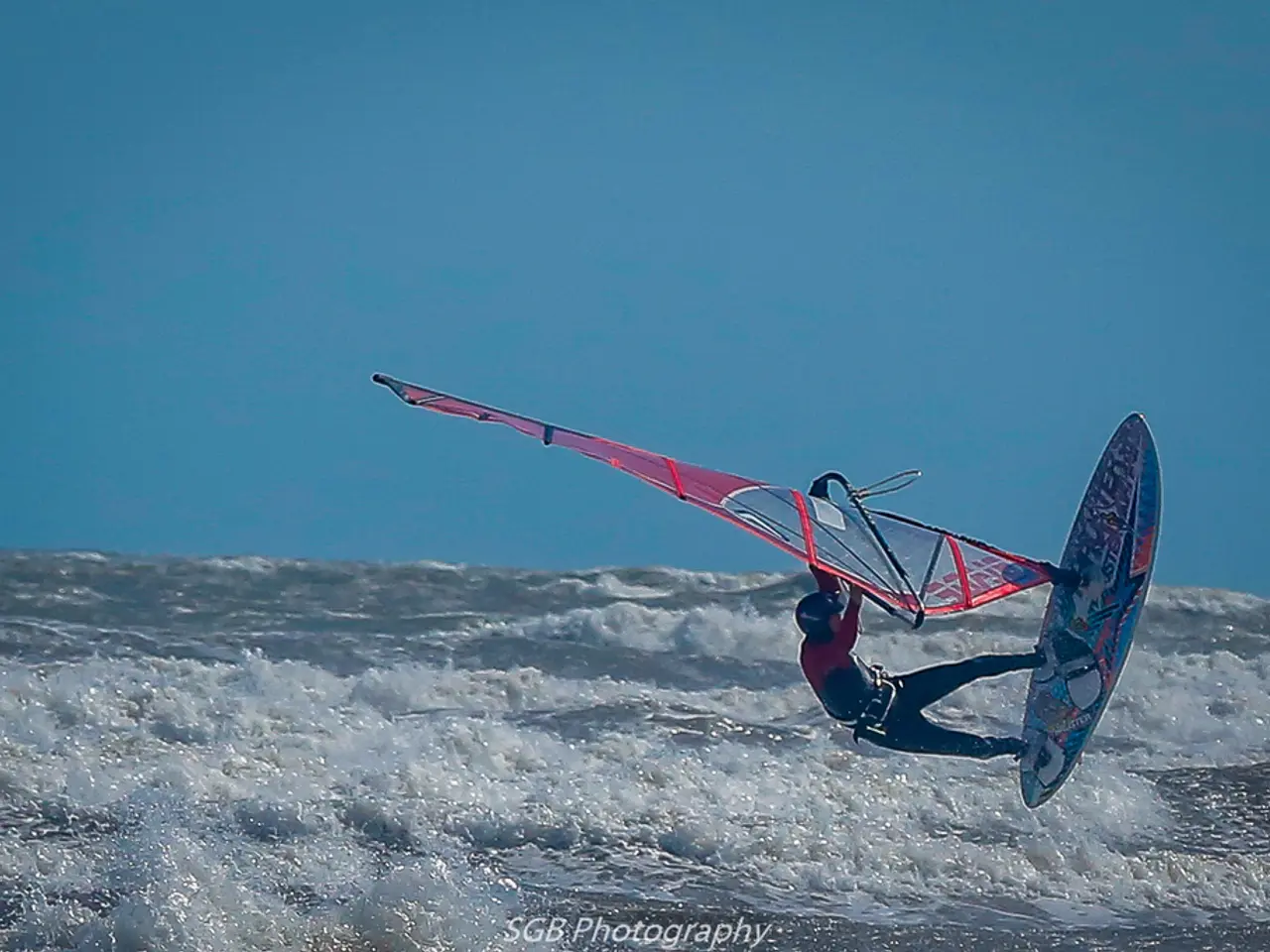Enhancing Balance and Agility in Surfing Through Mobility Exercises
Improving Surfing Performance and Reducing Injury Risk with Mobility Training
Mobility training has become an essential component of a surfer's fitness routine, offering numerous benefits that translate directly to improved performance and reduced injury risk.
By developing a structured routine that includes dynamic stretches, foam rolling, and yoga poses, surfers can perform mobility training at least 2-3 times a week. This regimen aims to improve spinal rotation, unlock tight hips, reduce stiffness, enhance movement control, and increase injury resilience. These improvements lead to better paddling, more efficient turns, smoother pop-ups, and overall enhanced performance on the wave.
There are several recommended methods for mobility training. Full-body mobility flows focusing on spinal rotation and hip flexibility can be used as a warm-up, morning mobility session, or post-surf recovery. A 13-minute routine involving movements that open hips and loosen the spine can be particularly effective.
Proprioceptive Neuromuscular Facilitation (PNF) stretches are another valuable tool for surfers. These stretches amplify hip mobility, crucial for surfing maneuvers like pop-ups and riding waves. Deep squats and specific hip-opening postures that restore youthful joint flexibility while maintaining posture alignment (feet, knees, hips) are examples of PNF stretches.
Yoga-based movements also play a significant role in mobility training. These movements combine stretching with strength and injury resilience benefits. Using tools like yoga wheels or stretching straps can help open the chest, increase upper back mobility, and gently lengthen hamstrings and shoulders, which are essential for surfing dynamics and recovery.
Core-strengthening exercises like Pilates underpin mobility training benefits by building a strong, stable foundation that improves posture, balance, force transfer, and controlled movement, all important for surfing's dynamic demands.
In summary, effective mobility training for surfers involves routines and stretches that enhance hip and spinal mobility, core stability, and movement control. These can be implemented through dedicated mobility flows, targeted hip stretches, yoga sessions, and core conditioning to optimize performance and reduce injury risk both in and out of the water.
Incorporating mobility training into a fitness routine can help surfers improve joint health and reduce the risk of injuries. Consistency is key in mobility training, making it a priority to stick to your routine to enjoy the benefits it brings to your surfing adventures. Seek professional guidance from a certified fitness professional or a mobility training specialist for a customized training plan.
Begin a mobility training session with a warm-up, such as jogging or jumping jacks, to increase blood flow to the muscles. Focus on the key areas like shoulders, hips, core, and ankles during mobility training to enhance their mobility and flexibility. Listen to your body and progress gradually, avoiding pushing yourself too hard, especially if you're new to mobility training. Mobility training can aid in the recovery process by reducing muscle soreness and speeding up recovery. Enhanced strength and power can lead to faster paddling, increased speed, and more effective maneuvers.
Engaging in mobility training can help surfers improve both their physical health and surfing performance by focusing on areas like spinal rotation, hip flexibility, and core stability. For example, a 13-minute routine that includes movements to open hips and loosen the spine can boost these areas, leading to better maneuvers on the wave, reduced injury risk, and overall improvement in surfing dynamics.
In addition to surf-specific movements, incorporating yoga-based postures, proprioceptive neuromuscular facilitation (PNF) stretches, and core-strengthening exercises like Pilates into your mobility training regimen can further enhance your health-and-wellness, fitness-and-exercise, and sports performance. Remember to consult with a certified fitness professional or a mobility training specialist to develop a customized training plan that suits your needs.




